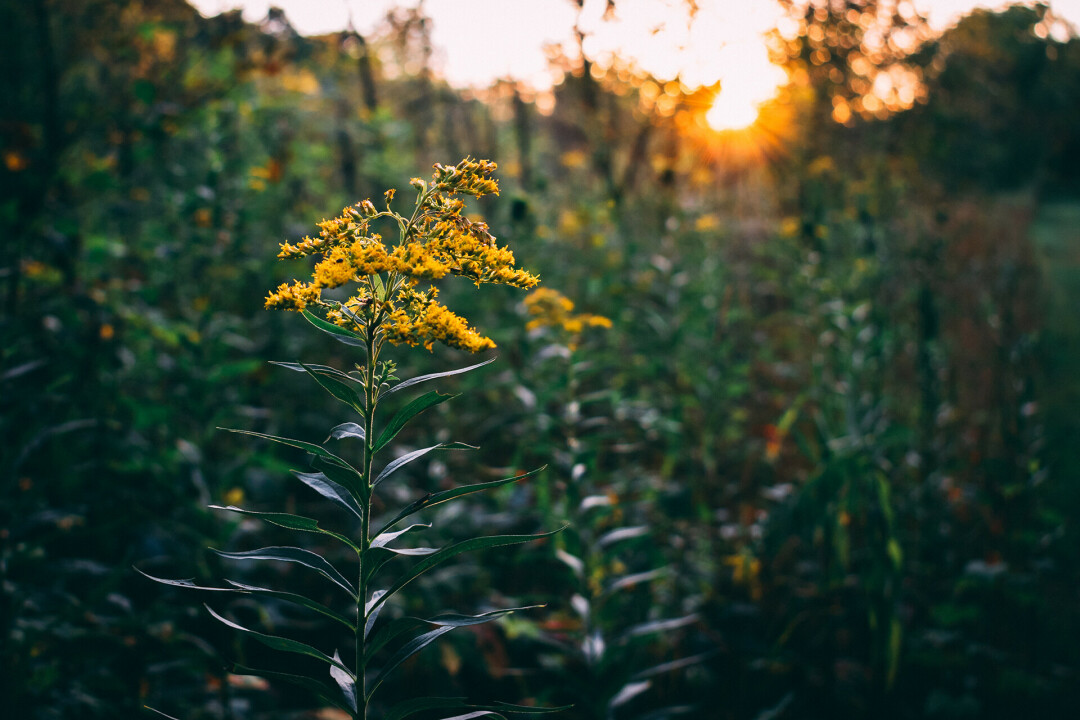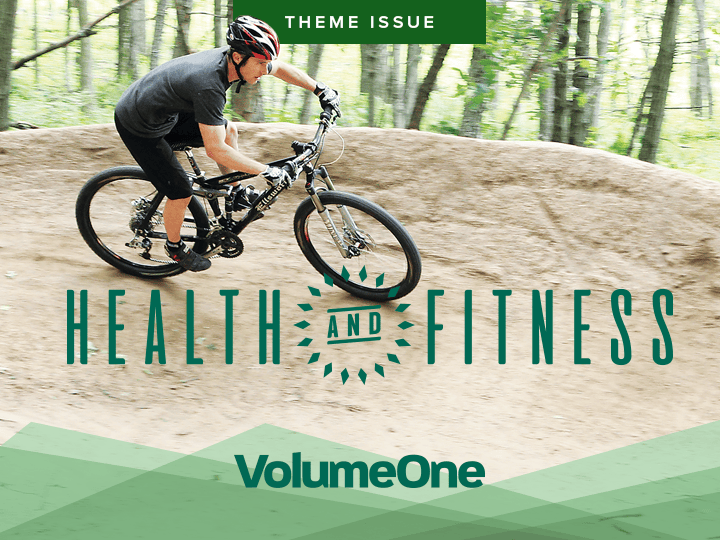Check Out These 6 Flowery Hiking Trails
wildflowers abound on regional creekside walks, woodland paths
Rob Bignell, photos by Taylor Smith

There’s no better way to see wildflowers in the Chippewa Valley than a hike. Wildflowers bloom from spring through autumn. Because of that, which ones can be seen on a trail in May will be much different than when hiking it in July or September. In addition, some trails head through areas perfect for spring wildflowers while other trails run across an ecosystem where blooms appear mainly in June or late August.
Spring is the season most associated wildflowers, and for good reason in Wisconsin. Many of our woodlands have ideal understories for flowers to blossom before the tree canopy fills out and blocks the sunlight. While trail conditions sometimes can be cold and wet in spring, hikers also have fewer bugs to deal with and less undergrowth, making the spotting of wildflowers easier.
Summer offers more warmth and sunlight, making for pleasant hikes. Wildflowers often look more impressive, as colonies of them stand out against a lush green background. On the downside, summer means bushes block line of sight views of many wildflowers.
Autumn’s crisp and dry days make for excellent hiking. As the leaves thin out, wildflowers become easier to spot once again. Fewer wildflowers bloom in autumn than in spring or early summer, though, making for limited viewing except in very specific locales.
Fortunately, there are plenty of great hiking trails around the Chippewa Valley to see wildflowers from spring through autumn. Some are right out your back door, while some are a day trip that you can do in an afternoon.
1. Putnam Park State Natural Area
Eau Claire
Dozens of different kinds of wildflowers can be seen from spring through autumn at Putnam Park State Natural Area. A good section to do that on is the wide 2.6-mile round-trip path paralleling Little Niagara Creek and stairs heading up a hillside to the UW-Eau Claire upper campus. To access it from campus, park in the Phillips Lot and connect to the trail to the south. You can also access the trail from the east by parking on Putnam Drive in the Third Ward neighborhood.
2. Lake Wissota State Park
Chippewa Falls
Purple coneflowers galore can be seen during July at Lake Wissota State Park. The 0.5-mile Prairie Wildflower Trail in the middle of the park offers an up-close view of tall grasses and a variety of other plants. From Chippewa Falls, take Highway 29 east. Exit onto County Road X then turn left/north onto County Road K and left/west onto County Road O. The park entrance is on the left/south.
3. Hoffman Hills State Recreation Area
Menomonie
Day hikers can enjoy wildflowers on a walk through a restored prairie and around two tranquil ponds on the Catherine Hoffman Hartl Memorial Wetland Trail. The 0.76-mile trail at Hoffman Hills State Recreation Area is a few miles northeast of Menomonie. Among wildflowers that can be seen are arrowleaf violet, brittle gentian, great blue lobelia, marsh marigold, sweet Joe-Pye weed, and white turtlehead. From Exit 45 on Interstate 94, take County Road B north. Turn right/east onto 650th Avenue, which eventually becomes County Road E. Follow County Road E/730th Street as it goes north. The highway zigzags to the park entrance, which is a little more than a mile north of 690th Avenue. Follow the park entrance road to the main parking lot. Walk north from the lot into the grassy picnic area, looking for the sign pointing toward the trail. Cross the park road, and you’ve reached the trailhead.
4. Buffalo River State Recreation Trail
Osseo
A rail-to-trail segment passes numerous wildflowers growing on four prairie remnants. The largest prairie – a 5-mile segment east of Osseo along the Buffalo River State Recreation Trail – includes stiff goldenrod, prairie coreopsis, spiderwort, and flowering spurge. From Osseo, take County Road NN north and park at an access road to the trail just before reaching Interstate 94. Take the trail east and turn back at County Road R for a 3.4-mile round trip.
5. Wildflower Trail
Jim Falls
Several woodland flowers can be seen in a small park near Jim Falls. Trilliums, spring beauty, wild ginger, and hepatica all can be seen on the short Wildflower Trail. The trail leaves from a historical marker celebrating Old Abe, a bald eagle that served as a mascot for Union troops in the Civil War. From Jim Falls, take County Road Y west across the Chippewa River. Turn right/north onto Highway 178. A gravel parking lot for the trail and marker is on highway’s east side just south of 150th Avenue.
6. South Fork Barrens State Natural Area
Stanley
Day hikers can see wild lupine at South Fork Barrens State Natural Area. There’s also a good chance you’ll see the rare and beautiful Karner blue butterfly, as the lupine is a favorite food. A 1.4-mile round trip hike on Channey Forest Road heads through a Jack pine-oak barrens. From Stanley, drive south on County Road H. Turn right/west onto East Channey Forest Road. In a half-mile, the road comes to the border of the state natural area. At the first jeep trail heading north, park on the road shoulder.
Rob Bignell is the author of Wisconsin’s Best Wildflower Hikes and 13 other hiking books about the Badger State. A former newspaper and magazine editor, his journalism work has won several awards, from editorial writing to sports reporting. He resides in Menomonie. Find him online at dayhikingtrails.wordpress.com.

